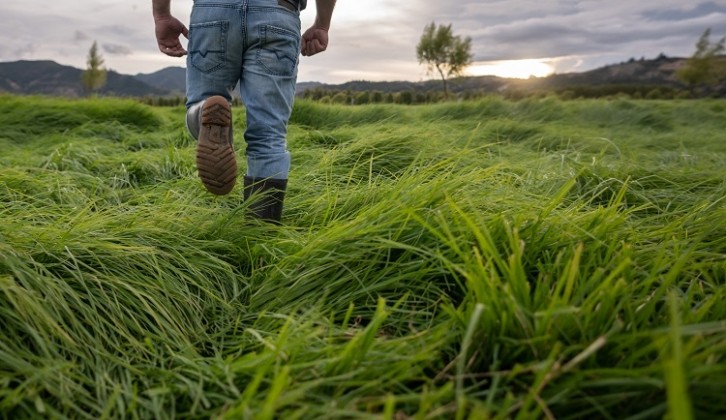‘We're going to work with meat companies, not compete with them’: Meatable on how cultivated meat can help farmers

The cultivated meat industry has often spoken about itself as a solution to the ‘problem’ of meat. According to a recent Royal Agricultural University (RAU) report, the language that dominates the cultivated meat industry speaks of replacing meat rather than working with it. This, perhaps understandably, has led to some trepidation from those whose livelihoods rely on traditional meat.
Dutch cultivated meat company Meatable wants to move away from this dynamic. Its new CEO, Jeff Tripician, also known as ‘Trip’, has 35 years of meat industry experience, working for companies like Grass Fed Foods and Perdue Farms, and wants farmers to know that cultivated meat won’t replace them at all. Instead, it’ll make their lives easier.
The company, which plans to launch commercially in Singapore later this year and wants to expand into the US, views cultivated meat not as a replacement for traditional meat, but as something to compliment it, as well as to mitigate the instability that radically increasing meat consumption poses to the meat industry itself.
What should cultivated meat do next?
There are two ways in which a cultivated meat can be successful, according to Tripician. The first is to enter the market with one’s own product, and compete for cold chain and shelf space with other brands.
Meatable, he told FoodNavigator, wants to opt for the second option: using cultivated meat as a raw material for farmers. “We're going to work with meat companies, not compete with them,” he said. “This is just another source of raw material. It doesn’t change what they’re doing.”
The only real difference between now and the future is that “today, their meat walks into the building. Everything else is the same. They handle it, they cut it, they grind it, they heat it, they package it, they ship it, they sell it, they market it. Nothing's changed, except for how the meat enters the plant.”
In practice, this wound mean replacing a percentage of ground meat products – such as burgers and hot dogs – with cultivated meat.
Can cultivated meat be produced on a farm?
While cultivated meat does have the potential to be used as a raw ingredient on a farm, European start-ups Meatosys and Respect Farms are taking this one step further: growing cultivated meat on the farm itself. This, they argue, will put farmers back at the centre of the cultivated meat industry.
How can cultivated meat help farmers?
Cultivated meat has seen significant backlash in recent years. Farmers in Europe have pushed back against it, and farmers in the UK, despite seeing opportunities in it, also have some concerns. It has even been labelled by some as ‘Frankenfood.’
Meatable, Tripician desires, will turn this rhetoric on its head. Cultivated meat, he says, provides some benefits for farmers.
For example, it helps address consumer demand. Farmers can charge slightly more for it than conventional meat. It also removes variables such as livestock disease, lead time, and lack of balance across the carcase (carcase balance is ensuring that the more profitable parts of the animal carcase balance out the less profitable parts).
How can negative perceptions of cultivated meat be combatted?
It isn’t just farmers who have expressed trepidation about cultivated meat. Its production has been banned in Italy, and in the US state of Florida.
This trepidation, Tripician explains, comes from unfamiliarity. He predicts that when people try it, they will say it tastes akin to what they’re used to. “It is what you're used to,” he affirms, “we just make it a different way.”
Why have Italy and Florida banned cultivated meat?
Italy and the state of Florida in the US have both undertaken cultivated meat bans. In Italy, the ban was put in place to protect Italy’s traditional food culture.
“We protect our food, our food system, to maintain the relationship between food, land and human work that has accompanied us for millennia,” said Italy’s Minister for Agriculture, Francesco Lollobrigada, at the time, “guaranteeing the quality that Italy expresses and which is the expression of food safety for the entire planet.”
In the US, cultivated meat was banned in Florida due to, according to its governor Ron DeSantis, the threat it poses to the cattle ranching industry and ‘authentic agriculture.’ A week later, the state of Alabama followed suit.
Tripician therefore argues Florida's governor Ron DeSantis would be more open to cultivated meat if he could see its benefits for farmers and ranchers in his state.
“If you say ‘I think this is part of a solution, Ron; this isn't to drive cattle ranchers in Florida out of business, just the opposite. This will help protect the Everglades. This will help them have a stable price on meat instead of a highly fluctuating price. And this will make sure you can feed all of [Florida’s] inhabitants, especially the ones on the lower half of the economic spectrum.’ I think he'd like to hear a little bit more about that."
What is the future for meat?
Most pressingly, meat consumption is due to increase by 70% by 2050. This, Tripician suggests, is a level of demand that farmers and ranchers are not ready for. They would have two options to meet this demand: either drastically increasing land use, or stressing both animal and land to a level that would lead to soil erosion, more water loss and more climate impact from increased greenhouse gas emissions.
“No farmer or rancher wants more of that. That's their land. They don't want to do that,” he argues.
Cultivated meat can provide some slack to the drastic global demand for meat, preventing this egregious land use and allowing farmers to grow at their own pace.
Tripician stressed livestock-based protein should not be reduced, but that the drastic 70% growth to meet demand must be avoided.
“We would be foolish to imply that the current marketplace should go down in supplying livestock-based protein, I think it should be where it is. Maybe grow a little bit. What we should attack is the 70% growth.”
Where are we now with cultivated meat?
- Cultivated meat is currently approved in three countries: Israel, Singapore, and the US.
- It has only been commercially available in a single country: Singapore.
- Approvals have been made in Switzerland, the UK and, most recently, the EU.
- Last year, the Dutch government gave Meatable approval to hold cultivated meat tastings.



























